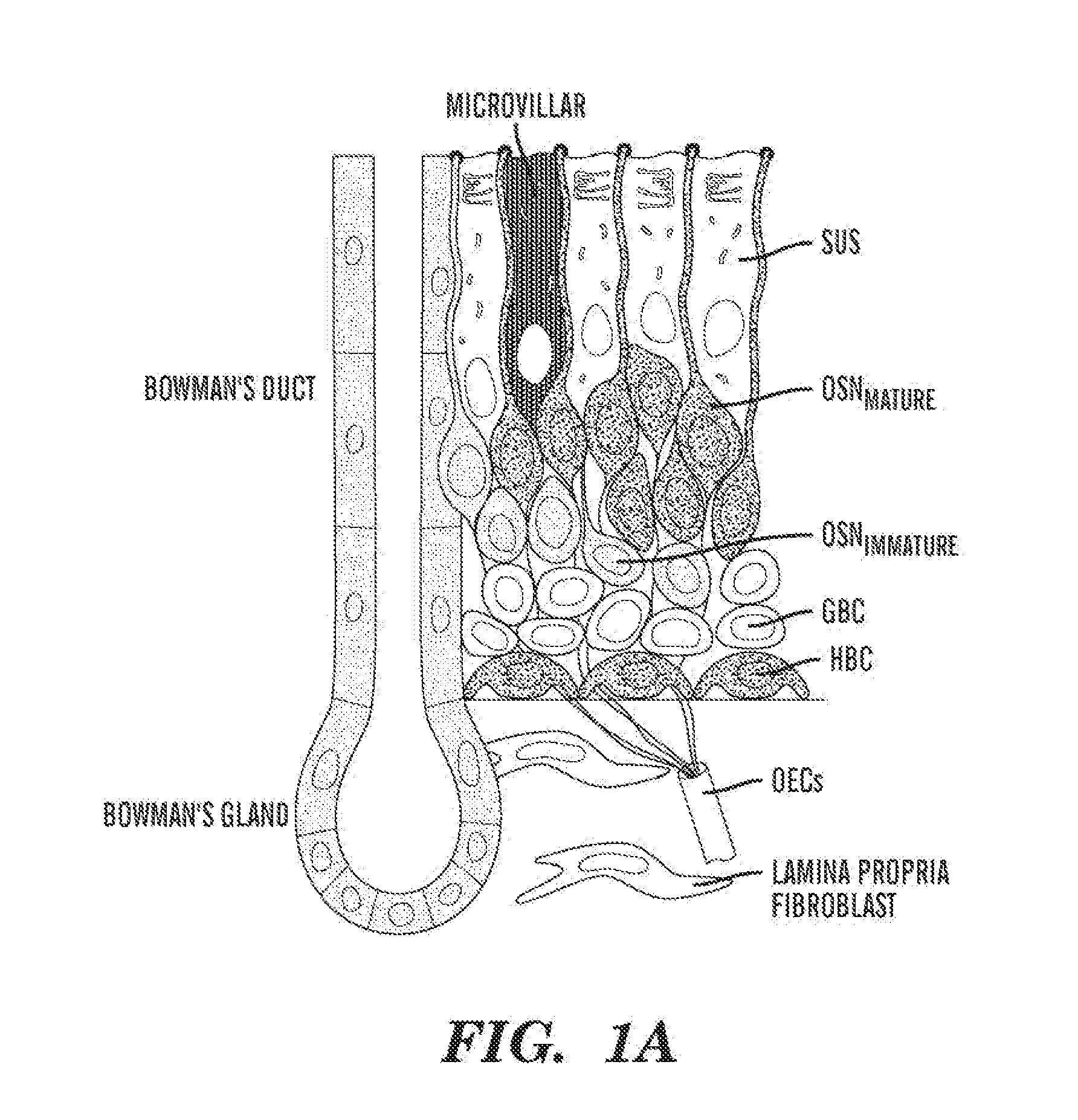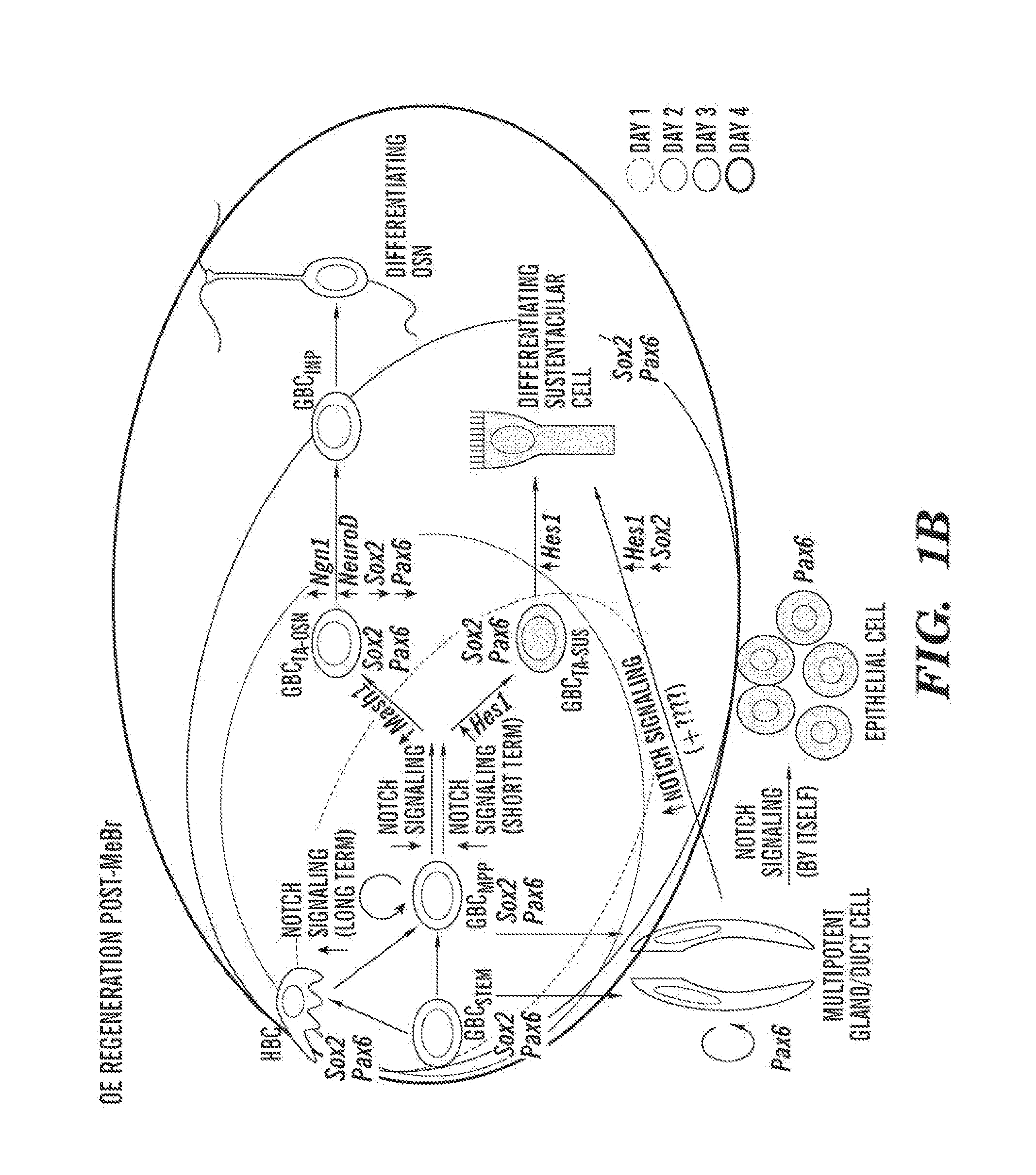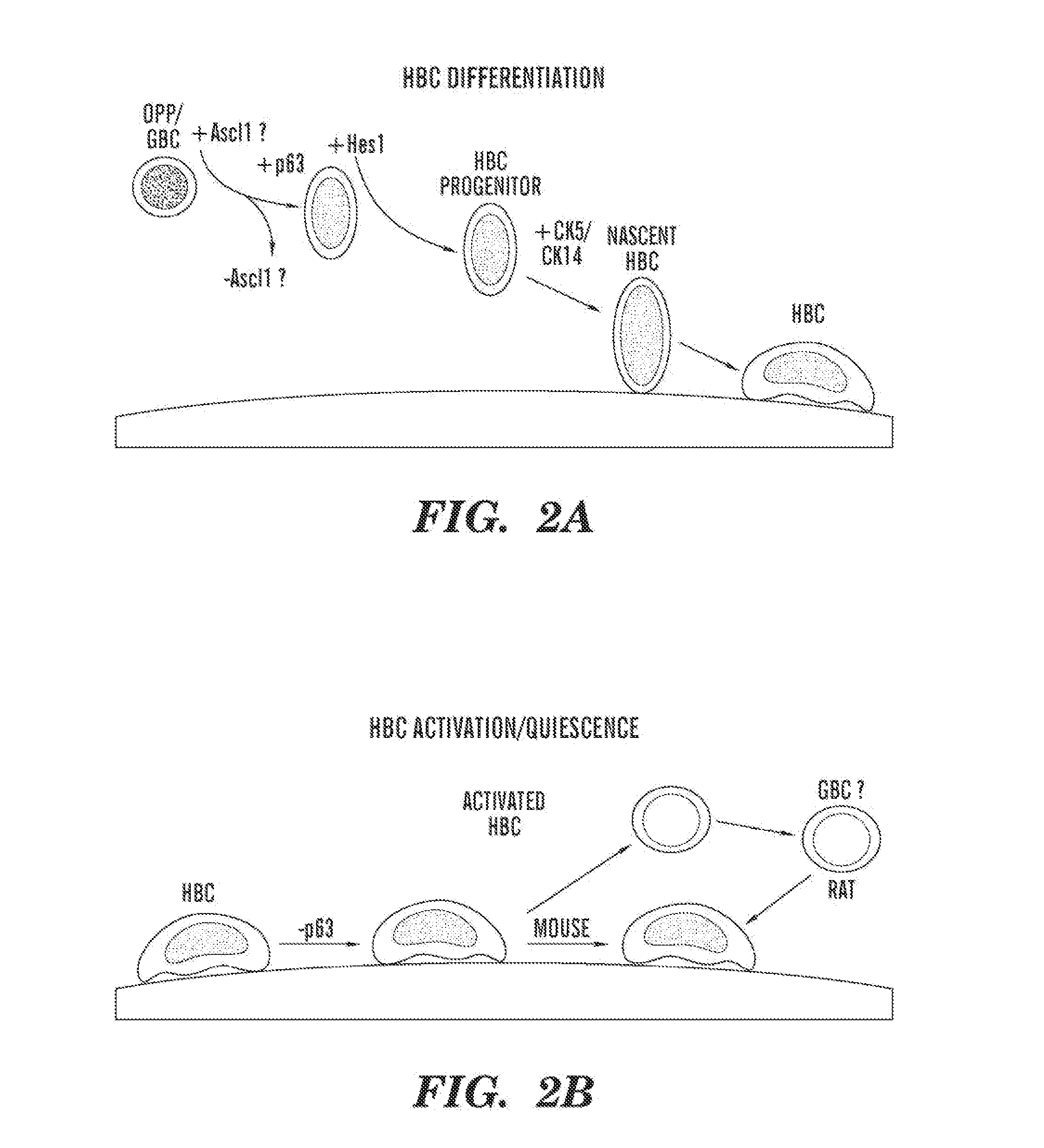TARGETING p63 TO RE-ACTIVATE DORMANT RESERVE STEM CELLS IN OLFACTORY EPITHELIUM
- Summary
- Abstract
- Description
- Claims
- Application Information
AI Technical Summary
Benefits of technology
Problems solved by technology
Method used
Image
Examples
example 1
[0104]Throughout this example, italics designate gene or genotype and CAPS designate proteins.
[0105]The capacity of the olfactory epithelium (OE) to recover after injury and maintain life-long sensory function depends on the maintenance and the regulated activation of the neurocompetent stem and progenitor cells of the epithelium. Conversely, depletion and dysregulation of olfactory stem and progenitor cells are both causes of sensory dysfunction. Both horizontal basal cells (HBCs) and globose basal cells (GBCs) function as multipotent progenitors in adult OE and can give rise to the full range of epithelial cell types (FIGS. 1A-1B). HBCs may be a “reserve” stem cell, since HBCs from normal adult OE are not immediately multipotent following transplantation. Instead, based on prior work, HBCs require in situ “activation” by the lesioned environment before they can engraft and function as multipotent progenitors. The transcription factor ΔNp63, a member of the p53 family, appears to b...
references example 1
[0182]1. Doty, R. L. A review of olfactory dysfunctions in man. Am J Otolaryngol 1, 57-79 (1979).[0183]2. Doty, R. L. Influence of age and age-related diseases on olfactory function. Ann N Y Acad Sci 561, 76-86 (1989).[0184]3. Moran, D. T., Jafek, B. W., Eller, P. M. & Rowley, J. C., 3rd Ultrastructural histopathology of human olfactory dysfunction. Microsc Res Tech 23, 103-110 (1992).[0185]4. Holbrook, E. H., Leopold, D. A. & Schwob, J. E. Abnormalities of axon growth in human olfactory mucosa. Laryngoscope 115, 2144-2154 (2005).[0186]5. Jang, W., Youngentob, S. L. & Schwob, J. E. Globose basal cells are required for reconstitution of olfactory epithelium after methyl bromide lesion. J Comp Neurol 460, 123-140 (2003).[0187]6. Leopold, D. A., Hornung, D. E. & Schwob, J. E. Congenital lack of olfactory ability. Ann Otol Rhinol Laryngol 101, 229-236. (1992).[0188]7. Schwob, J. E., Szumowski, K. E., Leopold, D. A. & Emko, P. Histopathology of olfactory mucosa in Kallmann's syndrome. An...
example 2
[0286]The ability of the olfactory epithelium (OE) to regenerate after injury is mediated by at least two populations of presumed stem cells—globose basal cells (GBCs) and horizontal basal cells (HBCs). Of the two, GBCs are molecularly and phenotypically analogous to the olfactory progenitors of the embryonic placode (OPPs). In contrast, HBCs are a reserve stem cell population that appears later in development and requires activation by severe epithelial damage before contributing to epithelial reconstitution. Neither HBC emergence nor the mechanism of activation after injury is understood. Here it is shown that the transcription factor p63 (Trp63), which is expressed selectively by adult HBCs, is required for HBC differentiation. The first evidence of HBC differentiation is the expression of p63 by cells that closely resemble embryonic OPPs and adult GBCs by morphology and expression of the transcription factors Sox2, Ascl1, and Hes1. HBC formation is delayed in Ascl1 knockout OE a...
PUM
 Login to View More
Login to View More Abstract
Description
Claims
Application Information
 Login to View More
Login to View More - R&D
- Intellectual Property
- Life Sciences
- Materials
- Tech Scout
- Unparalleled Data Quality
- Higher Quality Content
- 60% Fewer Hallucinations
Browse by: Latest US Patents, China's latest patents, Technical Efficacy Thesaurus, Application Domain, Technology Topic, Popular Technical Reports.
© 2025 PatSnap. All rights reserved.Legal|Privacy policy|Modern Slavery Act Transparency Statement|Sitemap|About US| Contact US: help@patsnap.com



